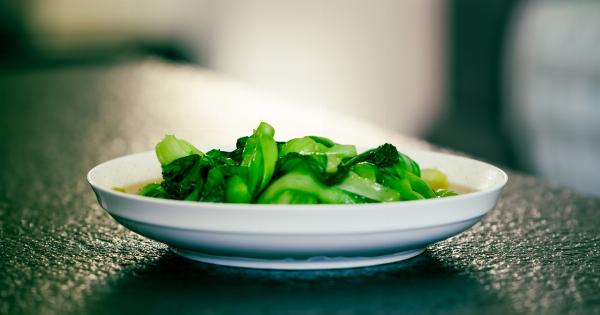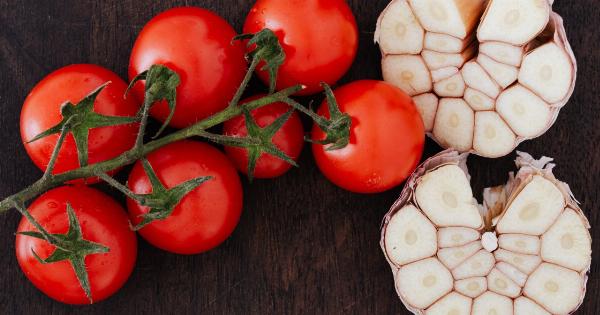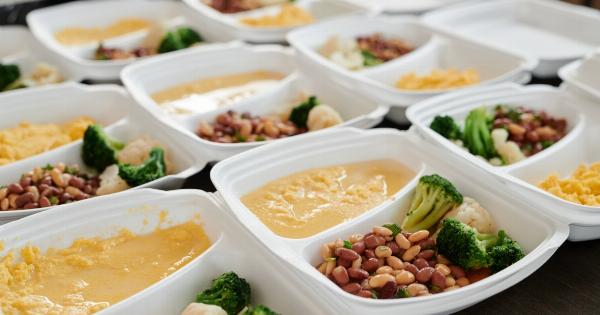Freezing food is a great way to extend the shelf life of your groceries, but most people tend to freeze only a few commonly known items such as meat, vegetables, and fruits.
However, many other foods can be stored in the freezer to make life more convenient. Here are ten surprising foods you can freeze:.
1. Eggs
Yes, you can freeze eggs, and it’s an excellent way to keep them fresh for a more extended period. Crack the eggs into a container, add a small amount of salt or sugar, and whisk. Pour the mixture into an ice cube tray and freeze.
Once the egg cubes are frozen, transfer them into an airtight container and store in the freezer for up to six months. You can defrost the eggs in the refrigerator the night before using them for scrambled eggs, omelets, or baking.
2. Avocado
Avocado is a delicate fruit that can be tricky to store. But, you can also freeze avocados. Cut the fruit in half, remove the pit and skin, and puree the flesh in a food processor. Add a squeeze of lemon juice to keep it from browning.
Pour the puree into a freezer bag and flatten it to remove air. Once frozen, it can be stored for up to six months and used for guacamole, smoothies, or as a spread for sandwiches.
3. Cheese
You can freeze hard and semi-hard cheese, such as cheddar, parmesan, and mozzarella. Soft cheeses such as brie and camembert, may not freeze well. Before freezing, cut the cheese into portions and wrap each piece tightly with plastic wrap.
Place the wrapped cheese in a freezer bag or airtight container and store in the freezer for up to six months. Thaw the cheese in the fridge overnight, and it will be ready to use for cheese platters, sandwiches, or cooking.
4. Bread
If you frequently throw away bread that has gone stale before you can finish it, try freezing it instead. Sliced and unsliced bread can be frozen for up to six months.
Before freezing, wrap the bread in foil or plastic wrap, place it in a freezer bag or container, and remove as much air as possible. Thaw the bread at room temperature for a few hours, or lightly toast it to refresh it.
5. Herbs
Herbs such as parsley, cilantro, basil, and mint can all be frozen for future use. Wash and dry the herbs, then chop them and place them in an ice cube tray. Fill each compartment with water or olive oil and freeze.
Once frozen, remove the herb cubes and place them in an airtight container or freezer bag. Add the frozen herb cubes into soups, stews, or sauces, or let them melt and use as a marinade for meat or vegetables.
6. Butter
Butter can be frozen for up to six months. Before freezing, divide the butter into portions and wrap it tightly with wax paper or plastic wrap. Place the wrapped butter portions in a freezer bag or airtight container and store it in the freezer.
Thaw the butter in the refrigerator overnight, or in the microwave on defrost mode, and it’s ready to use for baking, cooking, or spreading on toast.
7. Nuts
Nuts, such as almonds, pecans, and walnuts, can be frozen for up to a year. Before freezing, place the nuts in an airtight container or freezer bag. If you plan to use them for baking, toast the nuts before freezing to enhance the flavor.
Frozen nuts can be added to oatmeal, smoothies, or baked goods directly from the freezer.
8. Cooked Rice
Cooked rice can be frozen for up to six months. Before freezing, let the rice cool, then divide it into portions and place it in an airtight container or freezer bag.
When reheating, add a tablespoon of water to the container or bag and heat in the microwave or on the stovetop. Frozen rice is perfect for quick side dishes, fried rice, and soups.
9. Wine
Storing leftover wine in the refrigerator only extends its life for a day or two before it goes bad. Freeze leftover wine in a freezer-safe container and store it for up to six months. You can use the wine for sauces, stews, or adding flavor to dishes.
However, be aware that the texture of the wine may change after it’s been frozen.
10. Tomato Sauce
Tomato sauce is a staple ingredient in many kitchens. You can make a large batch and freeze it for future use.
Let the sauce cool, then transfer it into an airtight container, leaving some space at the top for expansion, and freeze it for up to six months. Defrost the sauce in the fridge overnight or reheat it directly from the freezer on low heat. Use the tomato sauce for pasta, pizzas, or soups.



























